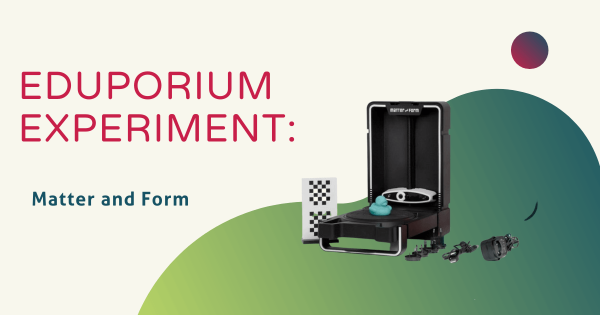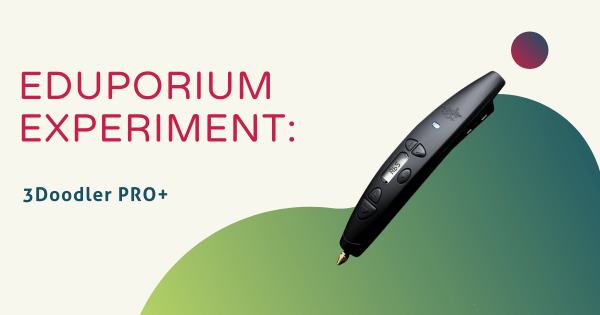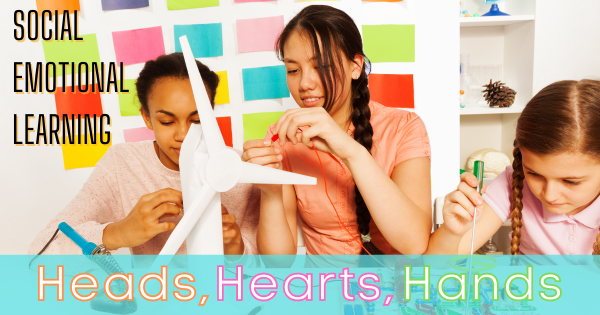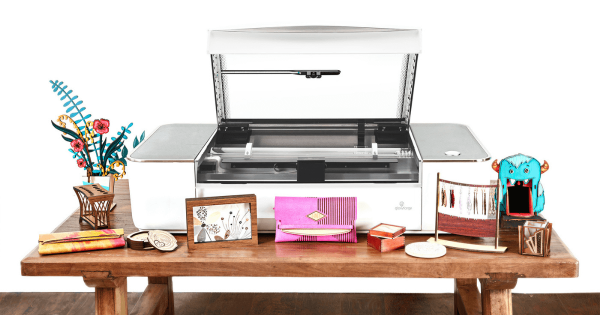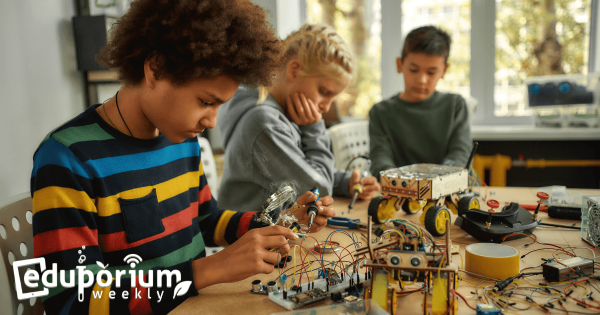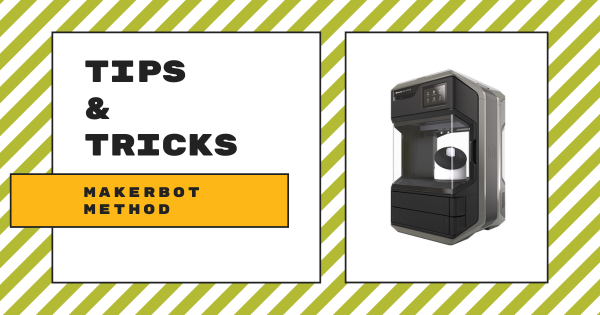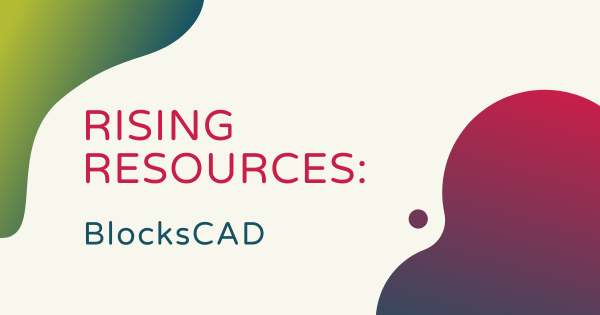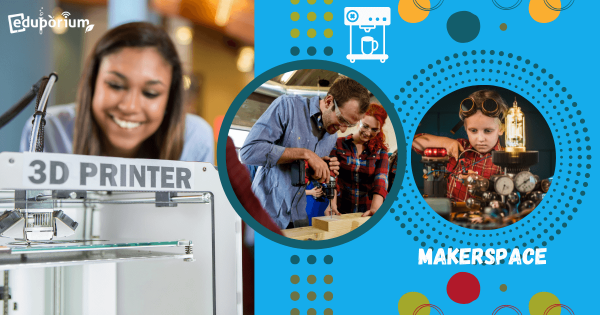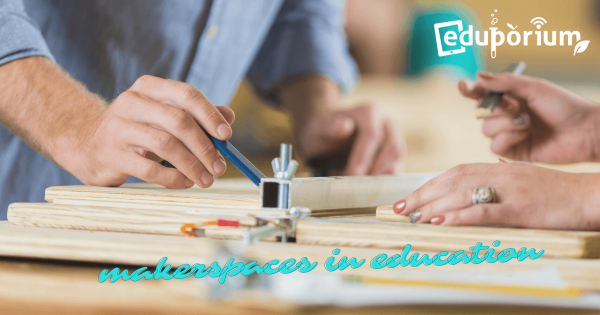The Matter and Form 3D scanner is a tool well suited for the older students who would like to add more complex objects to their virtual toolbox quickly and easily. In this hands-on edition of the Eduporium Experiment, we’re set to explore the imaging resolution of the Matter and Form 3D scanner along with many of its other most important
Maker Ed
Maker Ed has rapidly evolved into a big and important component of 21st century learning. Born out of the culturally impactful Maker Movement, maker education involves providing students with opportunities for hands-on construction, investigation, problem solving, collaboration, and more—all with this community-centric approach. In Maker Ed, students often excel with new types of opportunities to showcase their skills or to develop new ones. With so many potential projects to work on in the classroom or in school makerspaces, adding purposeful, hands-on work to the school day is very effective and inspiring. And, more importantly for educators, there's no wrong way for them to go about introducing maker education. It can be as complex as using various advanced 3D printers or as simple as building with popsicle sticks.
Aside from the likelihood of positively impacting students, Maker Ed is also popular because of its real-world connections. Not only can children further develop key technical skills, maker opportunities also help them to bolster some top soft skills. Making typically involves a lot of collaboration and this is especially true as students move into middle or high school. With unique, fluid opportunities, kids can simultaneously work on bolstering communication, teamwork, and other soft skills in the process. Plus, whether they are using classroom 3D printers, CNC machines, or even low-tech tools, they'll grasp a better understanding on using technology for good as well. Some solid product lines across Maker Ed are 3Doodler, MakerBot, LulzBot, Glowforge, and more. With these innovative solutions, students in all grade levels can truly propel their creative acumen.
-
Eduporium Experiment | 3Doodler PRO+ 3D Printing Pen
Sometimes, makers simply feel completely inspired to bring STEM projects to another level. Oftentimes, 3D design and creation fit right into facilitating such experiences for students of all ages but those who’ve mastered some of the basics tend to crave new challenges. And, that’s perfectly fine since, as we’ll learn, the 3Doodler PRO+ pen provides that extra power. -
Social-Emotional Learning And MakerEd: Head, Heart, Hands
MakerEd is a technological and creative learning revolution that centers on a pedagogy designed to help children bolster significant skills like decision making, responsibility, relationship management, community engagement, creative thinking, problem solving, teamwork, and more through hands-on projects that create connections between their heads, hearts, and hands. -
Get To Know The Glowforge 3D Laser Printers
Students and makers can utilize both of the Glowforge 3D laser printers for creating three-dimensional objects out of existing digital designs. They can download or create their own design and the laser will cut and engrave the design as a custom print every time. The printers are even compatible with Chromebooks, Macs, PCs, or tablets and include easy design features. -
Eduporium Weekly | Promoting Inventiveness In Education
Inventiveness, if you ask us, is something that goes hand in hand with 21st century problem solving and creativity, but, despite how it could potentially really help enable instructors to challenge student creativity, it is oftentimes overlooked. Luckily, inventiveness is key in STEM education and one of the key soft skills students can work on as soon as they enter -
Tips & Tricks | The MakerBot METHOD 3D Printer
Like most educational 3D printers, the METHOD melts materials and then it extrudes them onto the build plate in very thin lines, going layer by layer to create the object. The METHOD, specifically, is equipped with a heated build chamber that allows for all printed material to cool slowly, which is a process known as fused deposition modeling. Head inside -
Rising Resources | BlocksCAD For 3D Modeling
BlocksCAD is a tool that allows students to use blocks of code to engineer completely digital designs while they work on building their tech, invention, and other crucial STEM literacies. Educators can use BlocksCAD to shape an entire class or unit or to supplement existing instruction and sign up for the plan that’s best for what both them and their -
Eduporium Weekly | Elements Of Our Makerspace Consultation
Our maker experts are very well-versed in makerspace tools, technologies, budgets, and design—something that we have recently put extra effort into developing. So, whether educators already have a makerspace program at their school and are looking to expand on those offerings or need help with getting started, our makerspace team is ready to help you out! Here’s how. -
Tips & Tricks | Strawbees Lesson Plans For STEM And STEAM
The Strawbees STEAM kits provide students with a complete solution built for hands-on design, engineering, and programming. Each kit is comprised of reusable and recyclable straws and connectors that fit together and kids can create structures or robotic mechanisms with complete customization. Plus, teachers can find lessons or activities within Strawbees Classroom. -
Eduporium Weekly | Some Ideas For Values In Your Makerspace
Perhaps for the best, there’s no blueprint for creating a school makerspace but there are some strategies teachers could employ that might help to set theirs apart. Whether your makerspaces are big, tiny, stationary, mobile, or full of high- or low-tech tools, here are some of the coolest characteristics that the best makerspaces share—both physical features and attitudes.




